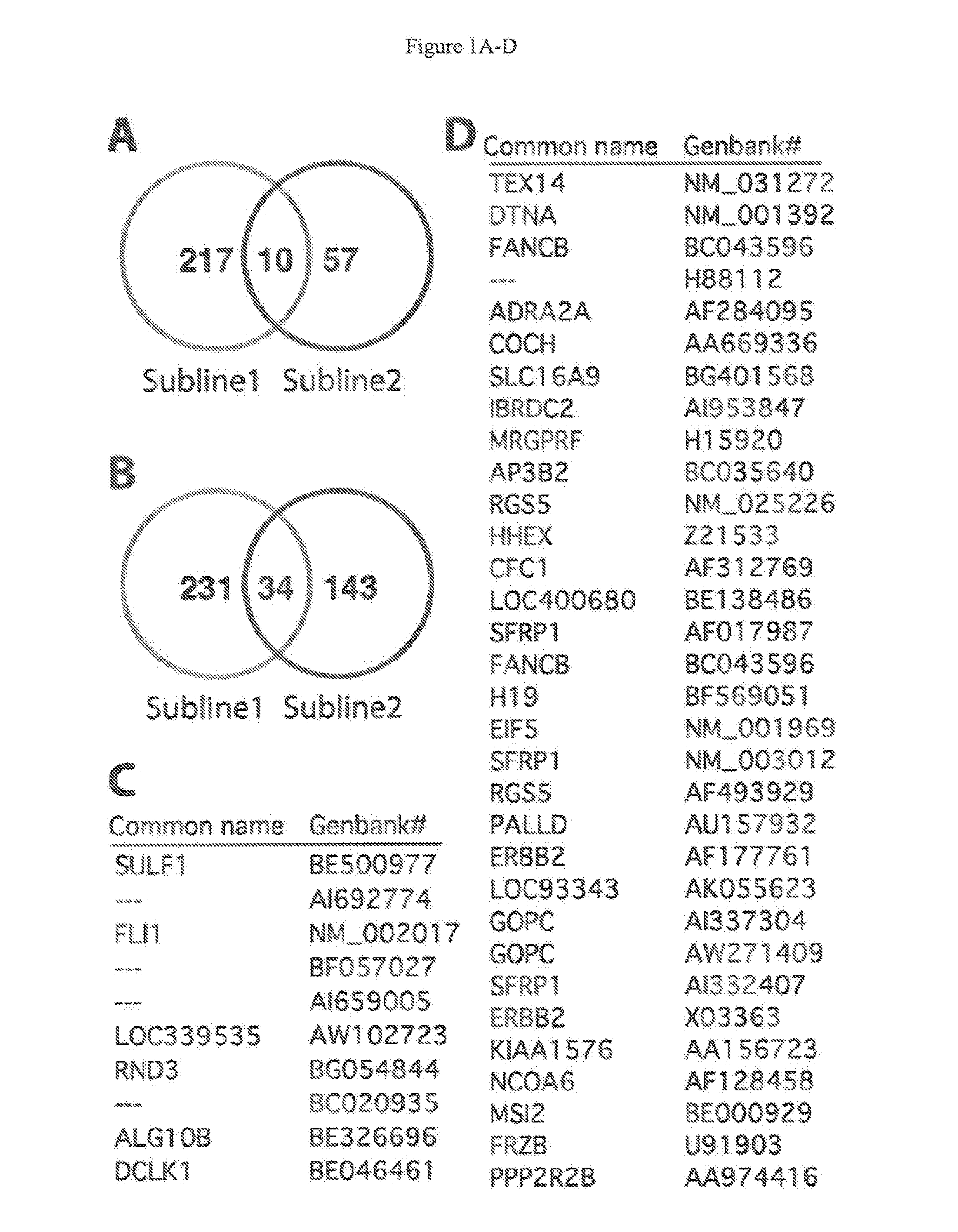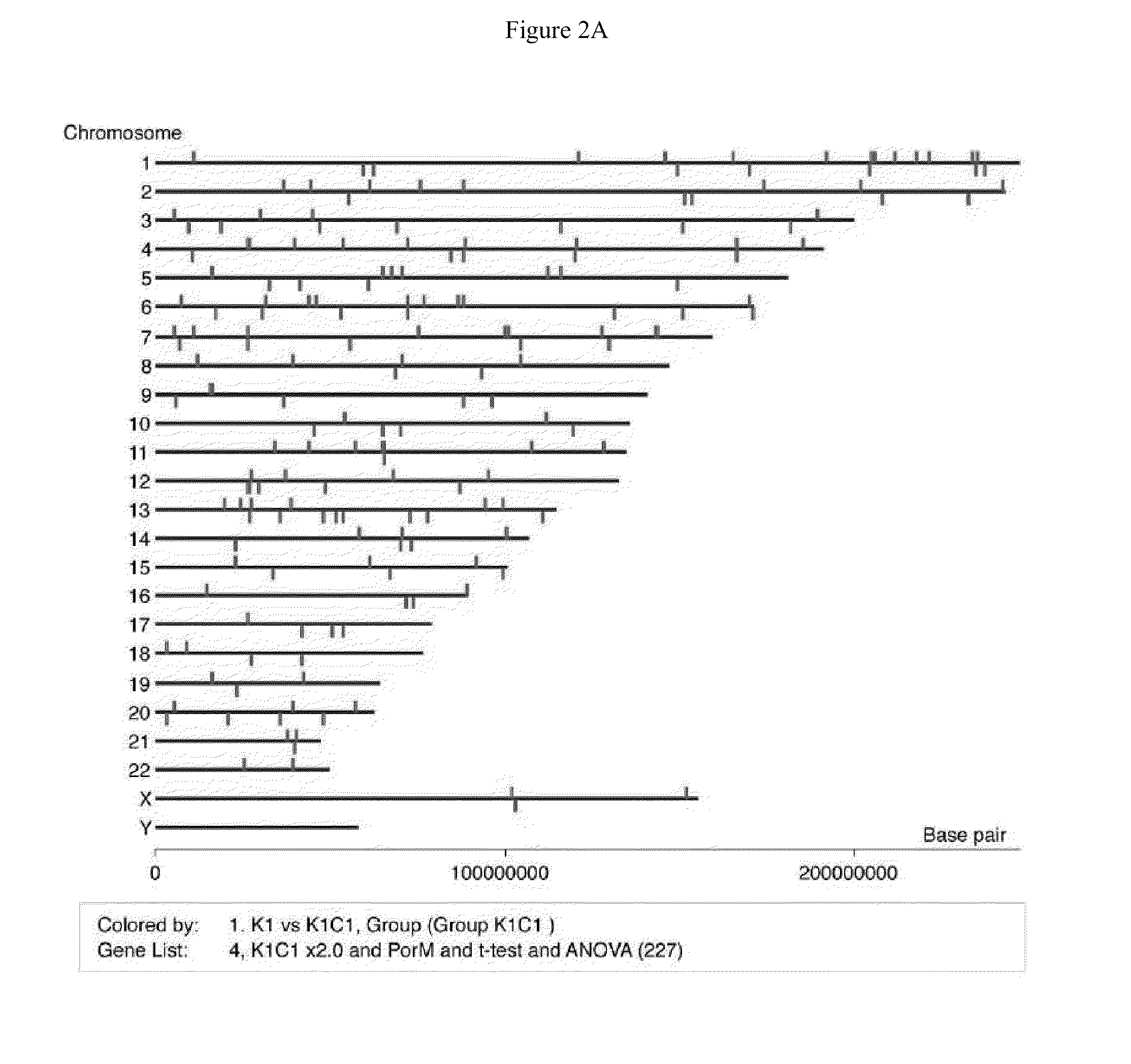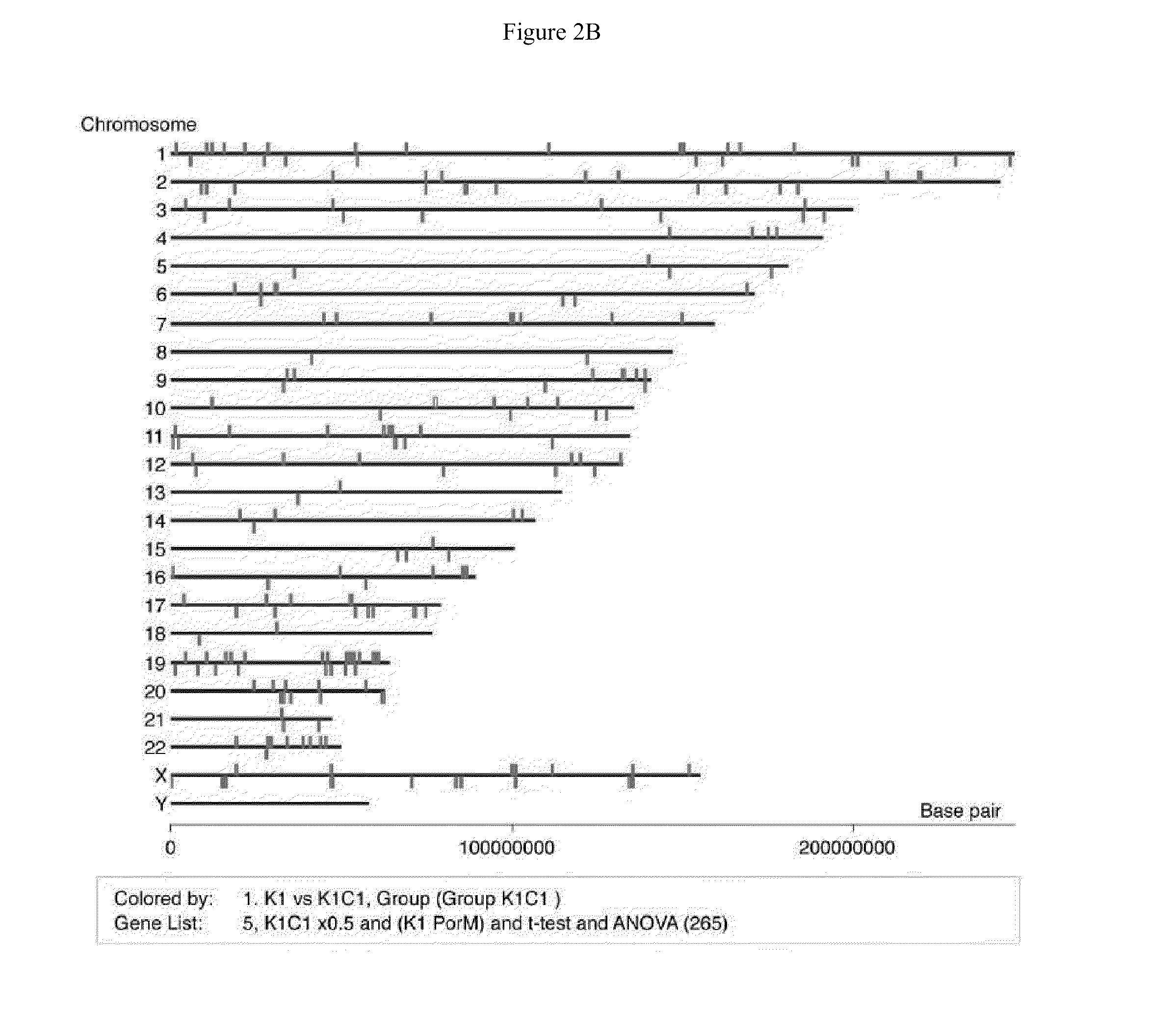Defined conditions for human embryonic stem cell culture and passage
a technology of embryonic stem cells and conditions, applied in the field of stem cells, can solve the problems of lack of scalability and/or complex culture media, variability of batch to batch use of animal-derived products, and complex culture systems of human feeder-derived cultures, etc., to achieve the effect of maintaining proliferation and pluripotency
- Summary
- Abstract
- Description
- Claims
- Application Information
AI Technical Summary
Problems solved by technology
Method used
Image
Examples
example 1
Cells and Cell Culture
[0035]The hESC lines HES2, HES3, H1 and H9, and the human fetal dermal fibroblasts-derived iPSC line were maintained using standard cell culture methodology. For enzymatic bulk expansion, the cells were cultured on mitotically arrested mouse embryonic fibroblast (MEF) feeder cell layers in DMEM / F12 supplement with 20% Knockout serum replacement (Invitrogen, CA), L-glutamine, non-essential amino acid and 4 ng / ml recombinant FGF2 (Peprotech), as described previously. For feeder-free culture, the MEF-feeder was removed by sedimentation in passage, and cells were cultured in MEF-conditioned medium on 30-fold diluted Matrigel (BD Biosciences, CA)-coated culture dishes.
[0036]The clonal proliferation assay was described previously. Briefly, the hES cells in feeder-free culture were dissociated completely with 0.05% trypsin-EDTA.(Invitrogen), and are seeded at 104 cells / well in Matrigel-coated 6-well culture plates and cultured in MEF-conditioned medium. Various concen...
example 2
Microarray and Quantitative PCR Analysis
[0038]Each 3 samples of parental KhESC-1, subline-1 and -2 were cultured in feeder-free condition and total RNA were purified with Trizol (Invitrogen) followed by RNeasy mini kit (Qiagen): Total 9 samples of 4 μg RNA were labeled with one cycle target labeling and hybridized with Human Genome U133 plus 2.0 Array (Affimetrix) respectively in accordance with the manufacture's protocol. The gene expression data were analyzed using GeneSpring GX software (Agilent), and the gene lists of up (>2.0-fold) or down (<0.5-fold)-regulated genes in subline cells from parental KhES-1 were made with criterion of t-test p-value <0.05 and 1-way ANOVA p-value <0.05 after removing Flagged spots.
[0039]For quantitative PCR analysis, total RNA was isolated from hESCs cultured in feeder-free condition with or without Wnt3a and Id-8 using RNeasy micro kit (Qiagen). RT was performed with Omniscript (Qiagen) and quantitative RT-PCR was then performed, using each gene-s...
example 3
Identification of ID-8 Target
[0040]The cells were washed twice with 5 mL of ice-old PBS and scraped using 1 mL of PBS containing protease inhibitor cocktail (Calbiochem 539137). The cells were collected by centrifugation and the cell pellet was frozen and stocked with liquid nitrogen. Total 2 g of cell pellet was thawed on ice and then suspended in 20 mL of chilled M-Per (Pierce 78501) buffer containing 1 mM DTT and the protease inhibitor cocktail. The cell suspension was mixed and lysed on a nutator (BD Diagnostics) for 30 minutes at 4° C. The lysate was then centrifuged at 10,000 rpm for 30 minutes at 4° C., and the supernatant was divided into two equal aliquots in 50 mL centrifuge tubes. DMSO control was added to one tube and 100 μM ID-8 was added to the other tube. The tubes were incubated for 1 hour on a nutator at 4° C. At the same time, 400 μl of 50% slurry of streptavidin-sepharose (GE Healthcare 17-5113-01) was equilibrated in M-Per buffer and then added to 10 mL of 50 μM ...
PUM
| Property | Measurement | Unit |
|---|---|---|
| thickness | aaaaa | aaaaa |
| chromosome stability | aaaaa | aaaaa |
| binding affinity | aaaaa | aaaaa |
Abstract
Description
Claims
Application Information
 Login to View More
Login to View More - R&D
- Intellectual Property
- Life Sciences
- Materials
- Tech Scout
- Unparalleled Data Quality
- Higher Quality Content
- 60% Fewer Hallucinations
Browse by: Latest US Patents, China's latest patents, Technical Efficacy Thesaurus, Application Domain, Technology Topic, Popular Technical Reports.
© 2025 PatSnap. All rights reserved.Legal|Privacy policy|Modern Slavery Act Transparency Statement|Sitemap|About US| Contact US: help@patsnap.com



